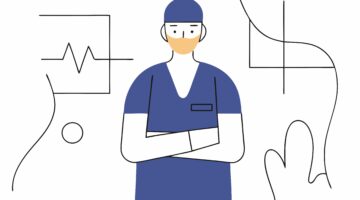Healthcare has a connectivity problem.
You might think I’m talking about cellular service coverage, Internet bandwidth or network integration, but telecommunications infrastructure is only a small part of the problem. Connectivity simply refers to the state of being connected, but there is a pervasive disconnect everywhere you look in health care. Many patients are disconnected from their clinicians and even more so from their own health and wellbeing. Likewise, many collaborating clinicians are disconnected from each other. Information systems are siloed and disconnected from other systems. Rural clinics are disconnected from metropolitan delivery systems. Some people are even disconnected from health resources or even information about those resources. No matter where you turn, the ongoing dialogue is centered on addressing gaps—gaps in coverage, gaps in access, gaps in communication, gaps in information.
One thing health care is not disconnected from is technology. The phrase “disruptive technology” will earn you a quick scowl from most clinicians and healthcare teams because the last thing they need right now is more technology disruption. If anything, having multiple “connections” has done nothing but complicate, rather than simplify, the fundamental care and treatment problems the healthcare team is working diligently to address. They don’t need the headache (no matter how “cool” the mobile app looks) of managing multiple technologies, platforms, logins, and access credentials. They don’t need the burden of another system migration or technology integration. They can’t handle any more form fields, drop-down menus, tabs, boxes, click-throughs, or meaningless gadgets. And when it comes to data, health care is drowning in it. It no longer matters that your snappy new platform can capture a “wealth” of data. It matters whether it can be harnessed, analyzed and transformed into usable information.
Health care needs practical, streamlined connectivity solutions that simplify communication, eliminate work flow redundancy, and close all those gaps that are impeding care collaboration. Clinicians and care teams need secure solutions for accessing real-time health information from virtually anywhere at any time. They need a universal identity for logging into multiple systems and applications across disparate health systems. Physicians need the simplicity of text messaging so they can stop using outdated paging systems and communicate as readily and easily as professionals do in other industries. They need to harness the volume of clinical data being captured by their platforms and devices and actually use that information to make better care and treatment decisions. Patients need access to an easy-to-read clinical record and resources for engaging in their own care and treatment programs.
The underpinning of all this, of course, is a strong communications infrastructure—i.e., reliable connectivity and virtually anytime-anywhere mobility. For Verizon, connecting people to each other and to the right information is our core competency. Every platform or solution we’re deploying in healthcare is built on the bedrock of a secure, reliable communications network. If you don’t have that, nothing else matters.
But it doesn’t stop there. Fixing health care’s “disconnect” will also mean taking a frank look at the cost and scalability limitations of traditional computing and networking. For a hospital CIO grappling with the “how” of resource management, ongoing compliance, and communication enablement, migrating to a HIPAA-ready cloud is going to be an inevitable part of that picture. And truly impacting care compliance and reducing readmissions is going to mean moving beyond mobility to smart mobility and beyond connectivity to engagement.
The dream of a robust national health information network has yet to be realized, and the deluge of technologies that now compete for the attention of clinicians has done nothing, some would suggest, but make that dream even more unlikely, which is why healthcare’s next-generation solutions need to be about eliminating complexity, not adding to it. Connectivity is not about jumping the gaps. It’s about closing and eliminating them.

Navigating The Right Steps For Your Healthcare Startup
This webinar will explore how a banking platform approach could be the resource for your company.
Lea M. Sims supports Verizon’s Global Strategies team as a healthcare strategist with more than 25 years’ experience in clinical documentation and health information management. Sims is an experienced healthcare writer, author of multiple technical standards manuals for clinical documentation, and currently chairs the Credentialing Commission for Healthcare Documentation (CCHD), the certification body for healthcare documentation specialists.
This post appears through the MedCity Influencers program. Anyone can publish their perspective on business and innovation in healthcare on MedCity News through MedCity Influencers. Click here to find out how.








